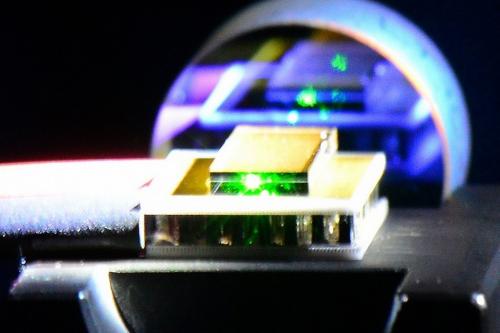Laser Beam Brightness Significantly Improved Using Diamond At Macquarie University
A team of researchers from Macquarie University's Photonics Research Centre has been able to demonstrate how diamond can significantly improve the quality of high power laser beams. Dr. Aaron McKay and his team were able to achieve this by exploiting optical interactions inside a diamond crystal. Now, we all know that lasers are used in various applications from the low-power laser pointers to high-energy devices that can burn steel using the laser beam. Lasers come in all shapes and sizes and different power ranges. In terms of physicists, the quality of a laser beam is determined by its coherence. Their inherent properties like brightness and beam quality make lasers an important part of sectors such as - environment and defense with applications ranging from remote sensing to materials processing.
For increasing the laser beam's brightness, the methods in use today have a "laser converter" that has a serious disadvantage of losing lots of power. In high-power laser beam applications, the large amount of heat dissipated in the converter spoils the process. By using diamonds, the Macquarie research team was not only able to achieve 50% higher brightness than the input beam, but also harness its ability to dissipate heat faster than other optical materials.

Using a process called stimulated Raman scattering, the beam conversion method not only improves the quality of the laser but also also converts the colour of the laser beam. The research team has been able to demonstrate the simultaneous conversion of a high power laser with poor beam properties to a bright beam in a part of the infrared spectrum called the eye-safe region.
These high-power diamond laser beams can find applications in a variety of applications in defense weapons and environmental sector. Do let us know what you think about this research work in comments below.
Source: #-Link-Snipped-#
For increasing the laser beam's brightness, the methods in use today have a "laser converter" that has a serious disadvantage of losing lots of power. In high-power laser beam applications, the large amount of heat dissipated in the converter spoils the process. By using diamonds, the Macquarie research team was not only able to achieve 50% higher brightness than the input beam, but also harness its ability to dissipate heat faster than other optical materials.

Using a process called stimulated Raman scattering, the beam conversion method not only improves the quality of the laser but also also converts the colour of the laser beam. The research team has been able to demonstrate the simultaneous conversion of a high power laser with poor beam properties to a bright beam in a part of the infrared spectrum called the eye-safe region.
These high-power diamond laser beams can find applications in a variety of applications in defense weapons and environmental sector. Do let us know what you think about this research work in comments below.
Source: #-Link-Snipped-#
0
